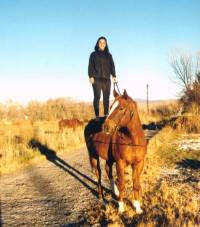 My body is smarter than the rest of me, at least when it comes to healing from adrenal fatigue. It tells me when to rest and when I have plenty of energy. The problem is that most of the time, I tend to ignore these signals from my body because I have "deadlines" and "stuff to do." This is all well and good until my batteries run out of juice and I literally crash!
My body is smarter than the rest of me, at least when it comes to healing from adrenal fatigue. It tells me when to rest and when I have plenty of energy. The problem is that most of the time, I tend to ignore these signals from my body because I have "deadlines" and "stuff to do." This is all well and good until my batteries run out of juice and I literally crash!The Beach and the Art of Listening to My Body
Luckily, even though I am usually quite deaf to my body's requests to rest, I spend five weeks each year in Cancun, Mexico (where I am right now). During these five weeks, I do very little work, focusing instead on recharging my batteries, relaxing, and rejuvenating.
Having recently discovered that I've run down my batteries so much that I now have adrenal fatigue, this latest trip down to Mexico has been most interesting. Adrenal fatigue occurs when we push ourselves to "keep going," no matter how tired or stressed we feel. Our bodies compensate for this by producing more adrenaline, cortisol, and other hormones so that we can keep going. The problem is, after a few years of living in overdrive, the adrenal system burns out because it is one of the most sensitive organ systems in the body. Then we have symptoms like constant tiredness, burnout, weight gain or loss, or depression.
That sounds like me to a tee. I recently started on an adrenal support supplement, Eleviv, and the results are quite interesting. Eleviv not only supports the adrenal system and other bodily systems so that I sleep more restfully and awaken more refreshed, but it also seems to enhance my body's requests for rest.
Adrenal Fatigue Recovery on the Beach
Down here I spend whole days lying on a beach chair under a palapa, reading a book or just staring at the ocean. Usually, being a very active zen cowgirl, I can't stand this level of inactivity, but having cleared my calendar and taken my Eleviv faithfully, I am beginning to "hear" the messages from my body. And I can honor those messages with very little trouble. I can sit quietly for hours at a time without feeling the need to be a human "doing" instead of a human "being."
With other people, adrenal support supplements like Eleviv tend to have the opposite effect. People who are often depressed or low-energy feel vibrant and energized, and are more willing to engage in activity instead of being inactive because of depression. It's pretty interesting how our bodies are each wired differently, and how adrenal support creates different effects in each of us.
Three Things You Can Do to Prevent Adrenal Fatigue
So there you have it. The beach report on adrenal fatigue. And in case you can't take five weeks to rejuvenate your body, don't worry. You can still alleviate the symptoms of adrenal fatigue in many ways.
1. Support your adrenal system with herbs like Eleviv.
2. Listen to your body.
If your body is sending messages that you are tired, don't override the message with artificial stimulants like caffeine. Instead, try to muddle though as best you can until you can take a break. Even a 10 minute power nap is better than slamming a few cups of coffee.
3. Regulate your schedule as much as you can.
The more you can get your body on a regular schedule, the less you will need to call on your adrenal system to go into "overdrive" to accommodate unexpected emergencies. Try to get up and go to sleep at the same time each day. Leave work at the same time each day if possible. A regular routine keeps us from overworking the adrenal system.
I hope that helps. Adrenal fatigue isn't fun, and it can take up to two years for your body to recover if you have a severe case. Lying on the beach and staring at waves for a few weeks is my recovery method of choice.
Care to join me? I'd love to show you how. Eleviv is only part of the equation ... drop me a line to learn more.
If you enjoyed this post, please consider leaving a comment or subscribing to the feed to have future articles delivered to your feed reader.





